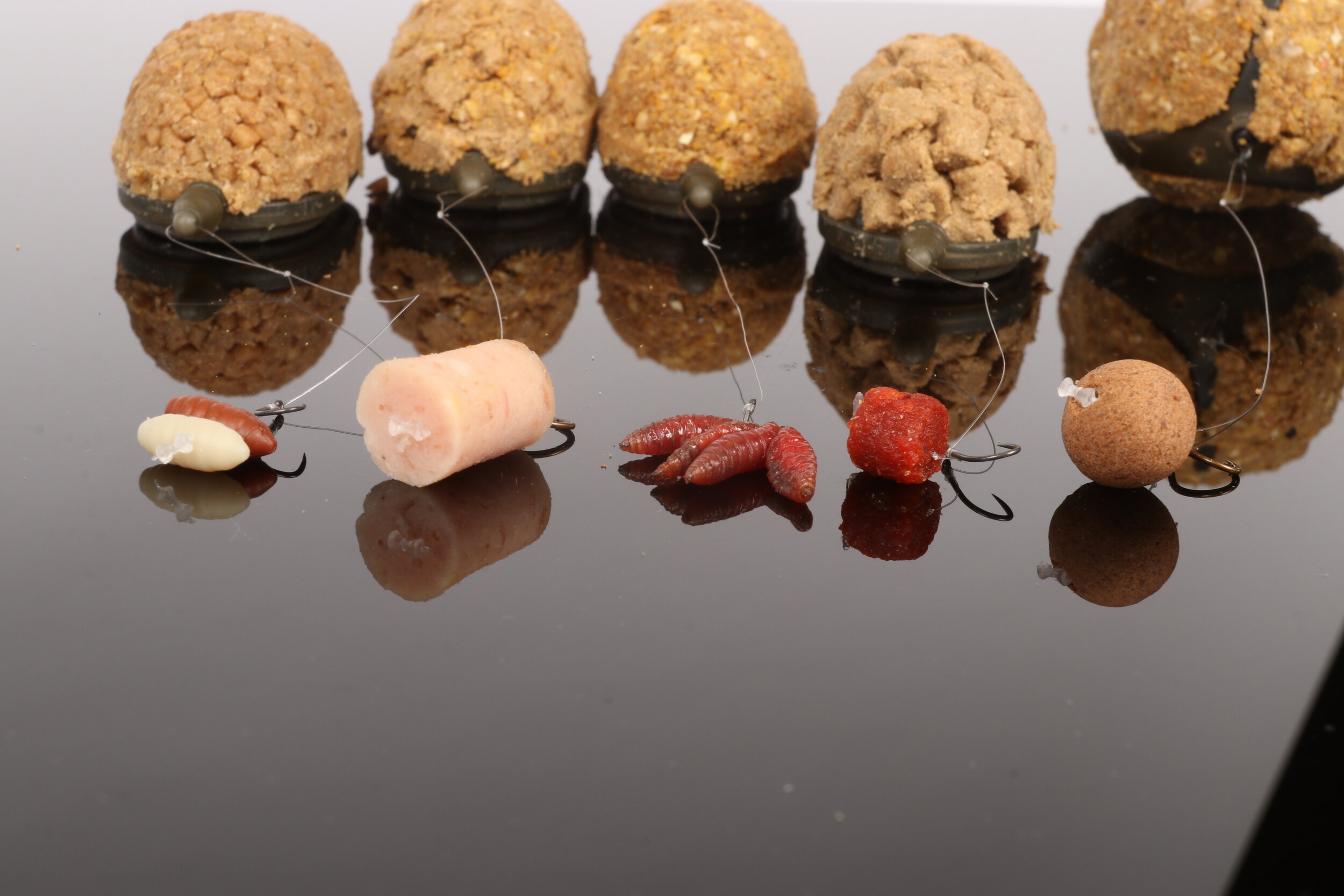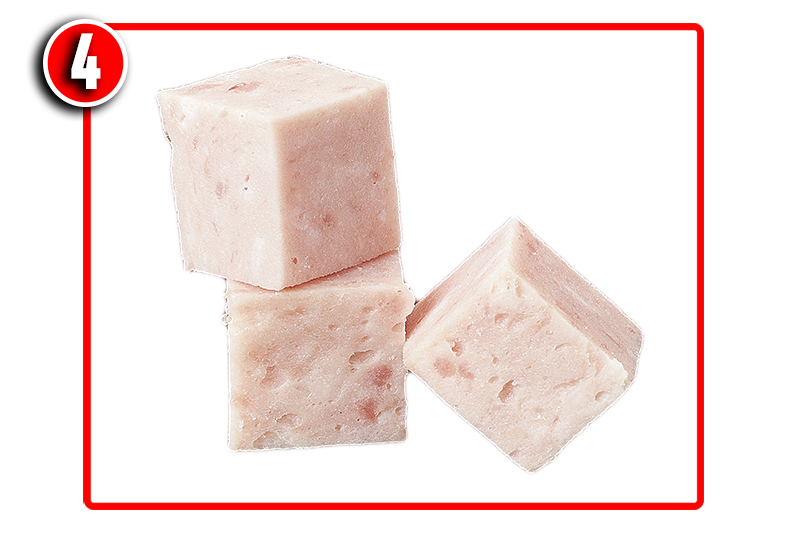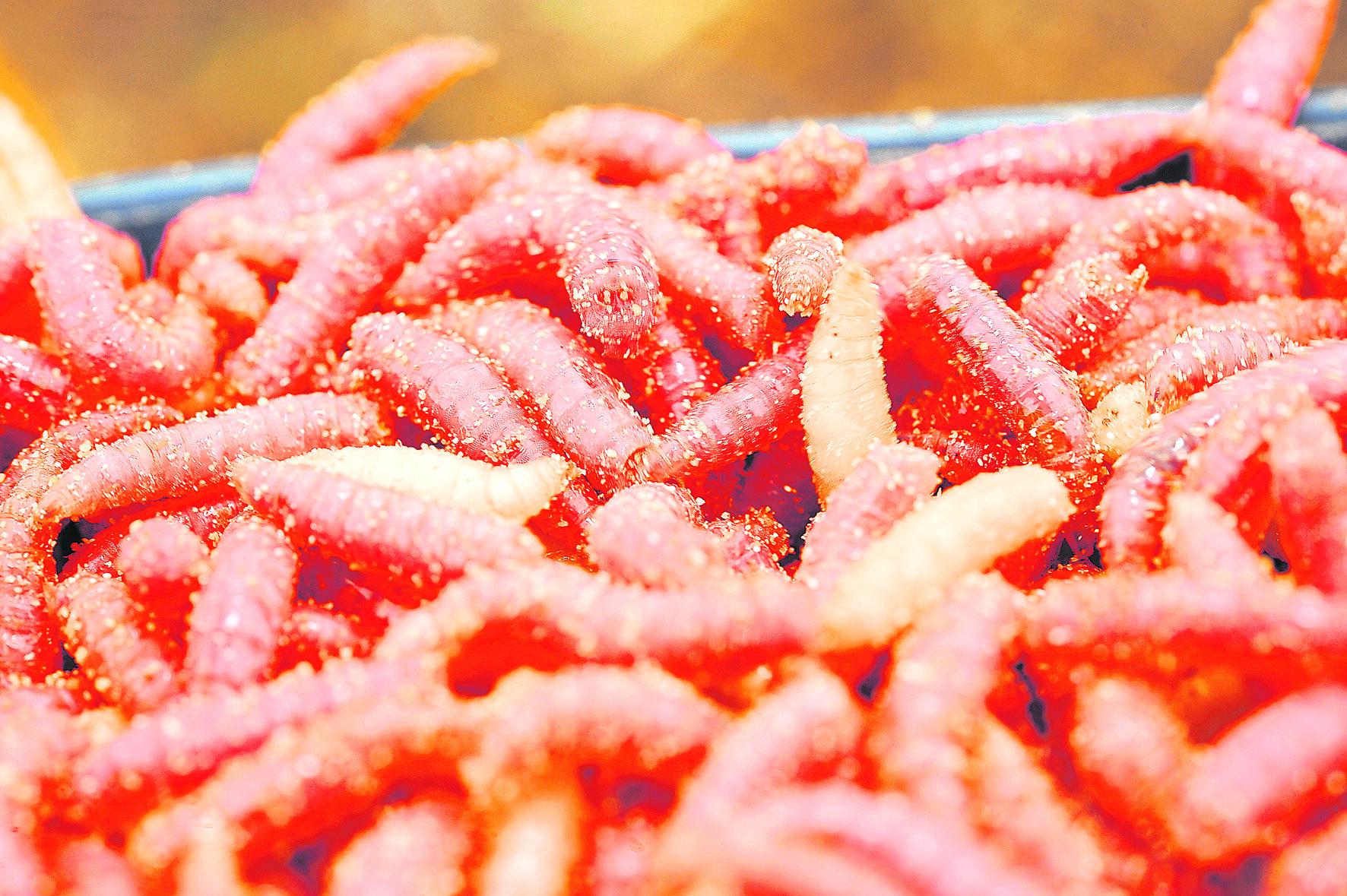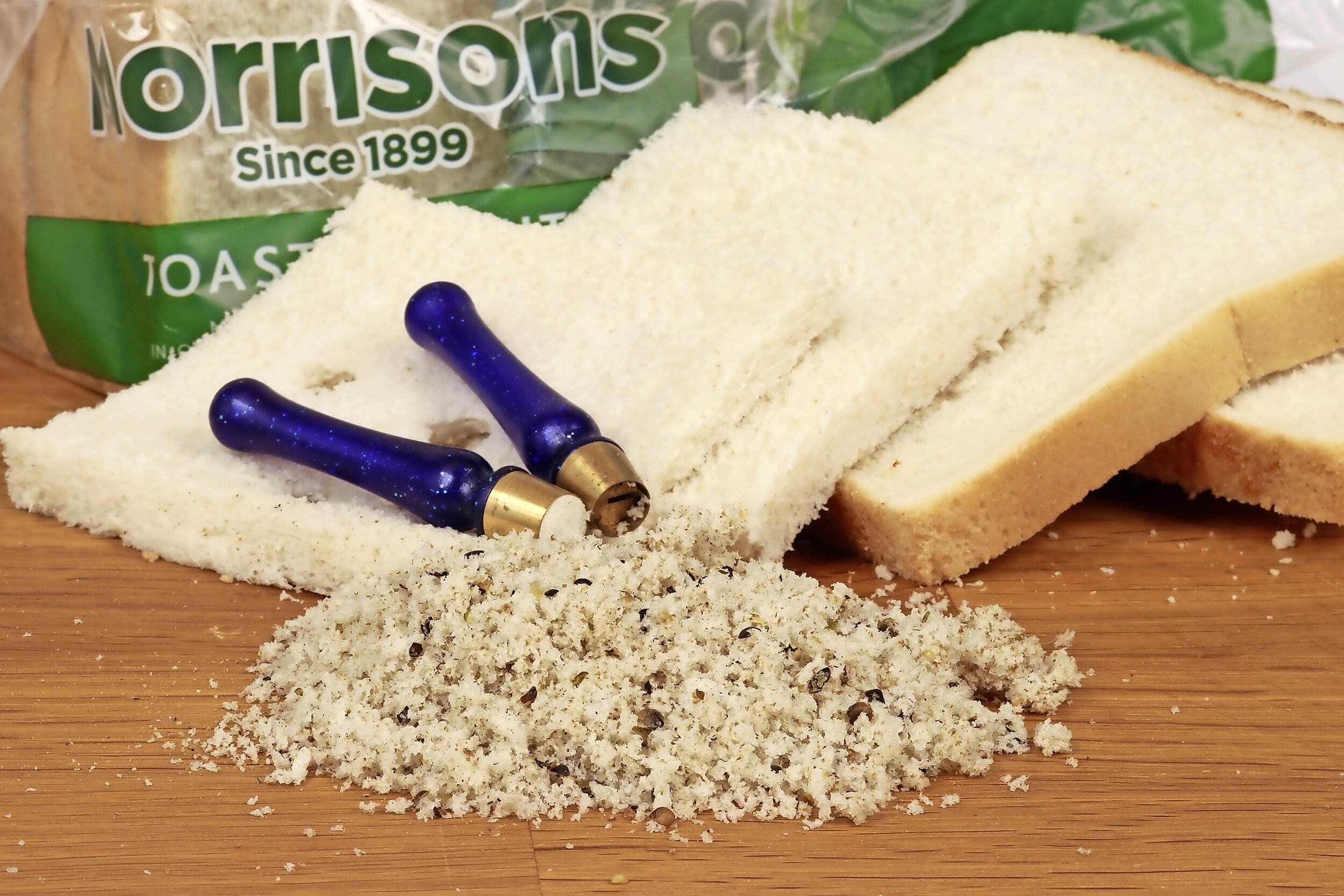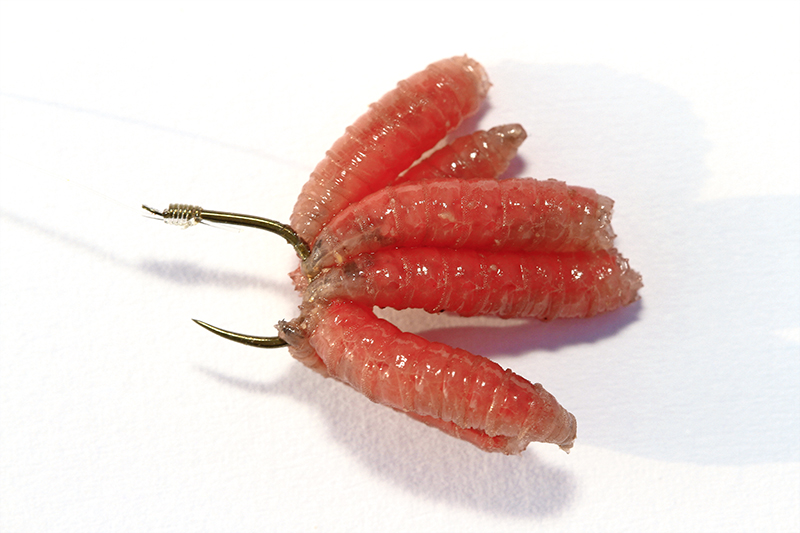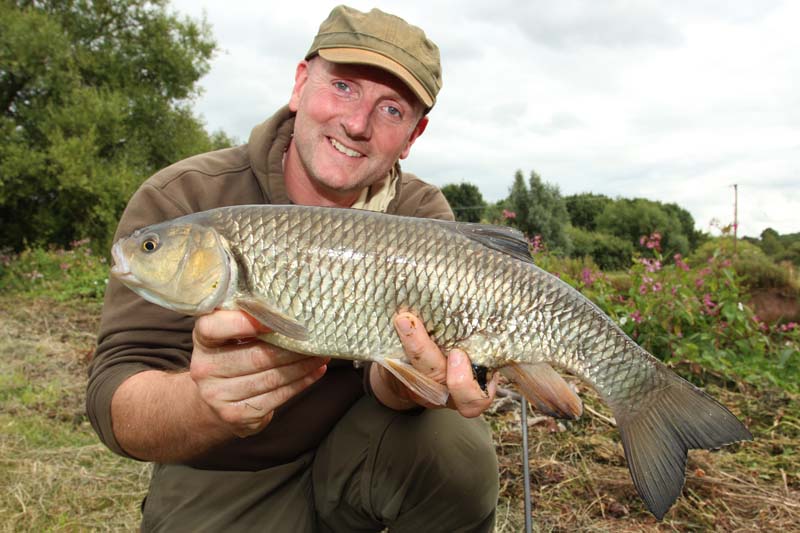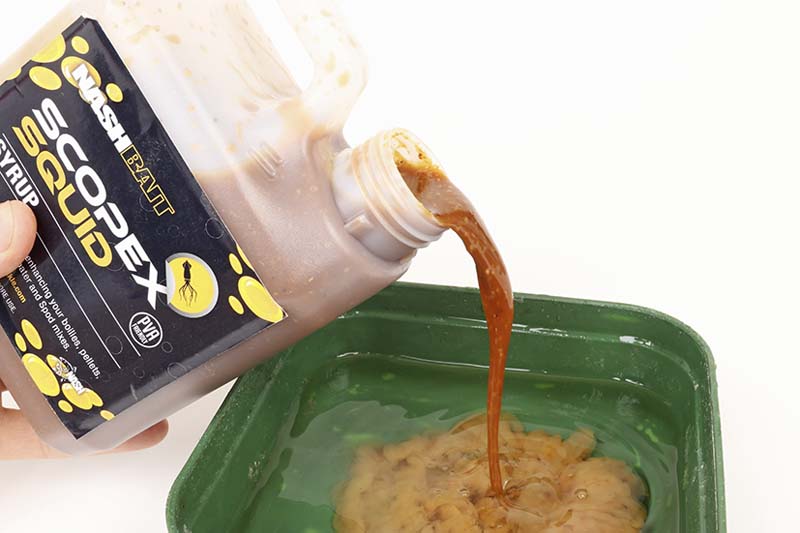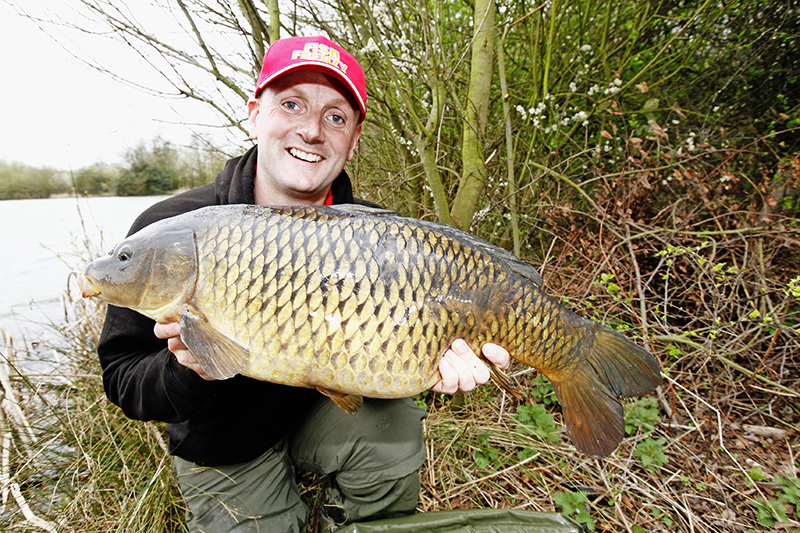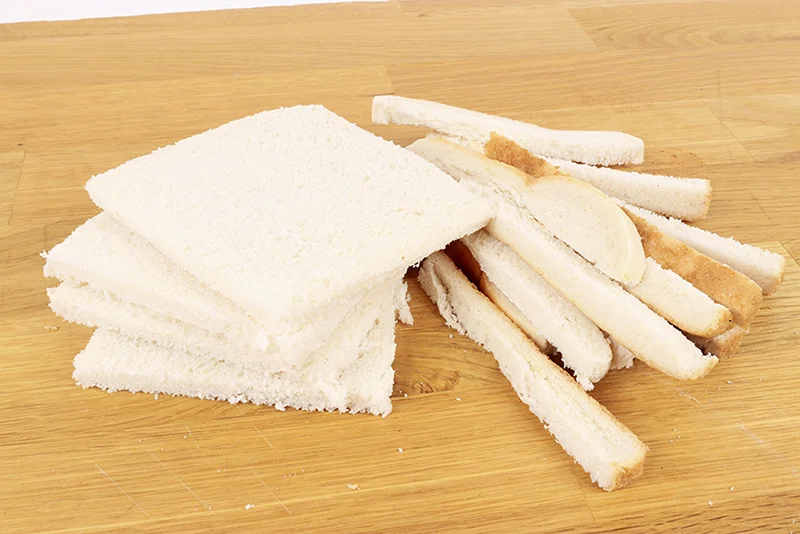The best method feeder hookbaits - Paul Garner
Hookbait choice can make a huge difference to your Method feeder catches.
Some score best with bigger fish, while others will win you extra bites on tough days. Here’s my pick of the bunch...
Picking the right hookbait can get extra bites on the method feeder
Fake baits
Artificial casters will pick off bigger fish than the real thing, and are great when there are a lot of nuisance fish around. Most packs contains different colours, so see which one the fish prefer on the day.
Dark baits often score in summer, but the off-white ones can bring bonus fish when the going gets tough.
Best for: Tench, crucians and carp
Artificial casters will pick off bigger fish
Punched meat
Easy to use, and with a distinctive taste that carp love, punched meat is one of my favourite Method hookbaits for larger carp.
Cut the meat into 10mm-thick slices and use a bait punch to produce perfect 6mm hookbaits, stepping up to 10mm when they are feeding well.
Best for: Big carp
One of my favourite baits for larger carp
Dead maggots
A bunch of four dead red maggots is very effective, especially in the cold, when small fish are less active. I like to use maggots that have been frozen.
They have a soft, stretched appearance, but are still quite tough. Use a bunch on a size 12 hook.
Best for: Bream, tench and carp
Dead maggots come into their own when it is cold
Pellets
For Method fishing I like an 8mm tough hooker pellet. The consistency is ideal for hair rigs, and I use them with a Quick Stop to make baiting-up simple.
In summer go for savoury flavours, while in winter, sweeter flavours work better.
Best for: Carp, tench, bream and F1s
Go for savoury pellets in the summer
Wafters
These slightly buoyant hookbait boilies only just sink, and hover just above the bottom. Being semi-buoyant, they are easy for larger fish to suck up, giving more bites and better hookholds too.
Wafters are tough baits, so you can often catch several fish on the same one. Hair-rig them using a boilie spike for best results.
Best for: Carp and bream
You can often catch several fish on the same wafter
Top margin baits you can use right now!
With spring now here Daiwa's Will Raison offers some timely advice for the best margin baits to be using right now. Here are his top baits to use when fishing for big carp down the margins.
Sweetcorn
Forget using a single grain of corn in the margins – two pieces will get you more bites and bigger fish, working on the principle that a carp will spot two bits of yellow corn far quicker than just the one, especially when the bottom is being churned up by feeding fish. Corn is also a heavy bait that won’t be washed about and is hard for little fish to rip off the hook.
Dead Red Maggots
Without a doubt the number one margin bait! I cram up to seven or eight dead reds on to the hook to create a massive hookbait that no carp can miss or refuse.
Deads are very soft and still look like their live counterparts to the fish, but don’t wriggle. When fishing over a large helping of dead reds, carp will move in and hoover up the lot, including the hookbait. They’re a very light bait that are easy for the fish to suck in.
To make dead red maggots I simply clean the sawdust off a few pints and put them in a plastic bag, remove all the air and seal them tightly. The maggots then go into the freezer for three days to ensure they’re dead – I have frozen them for one day before, only to see them come back to life!
Worms
These are venue-specific baits in my experience and tend to work on waters that see a lot of chopped worm and caster used by anglers– the carp get a real taste for them.
They’re also great if there are a lot of roach and rudd in the peg that are smashing maggots to bits. I’ll fish one or perhaps two for a big bait. They’re also worth having in reserve as a change bait when using maggots and groundbait, as the bites can be very savage.
Luncheon Meat
Meat can be very cyclical, in that it works over any other bait for spells during the spring and autumn. However, in July and August I would still have some 10mm cubes with me to slip on to the hook as a change bait.
Dr Paul Garner's 10-minute make | Margin meat
Meat is a cracking bait for margin fishing. I like to give mine a bit of a twist to give it maximum pulling power and make it really stand out.
Cube a tin of luncheon meat using either a sharp knife or a meat cutter. I prefer 8mm-10mm cubes for themargins, as they pick out the better fish.
Add some chilli and rock salt flakes to three tablespoonfuls of hemp oil.
Pour the oil mix over the meat and give it a shake to cover it evenly.
For best results leave the oil to soak into the meat overnight.Store it in the fridge to keep it in top condition.
A bait combination for every species with bait expert Dr Paul Garner
The bait you load on to your feeder can make a massive difference to the fish you catch. Here are some of my favourite combinations...
The Method is super-effective for big greedy carp. Recast regularly at the start of a session to lay down a bed of feed, and use a groundbait containing flaked maize, small pellets and other morsels to keep carp grubbing around. Top this off with a shaved 15mm wafter boilie on the hair.
Commercial carp respond well to feed pellets. The bulk of my feed will be 4mm pellets, but to stop the carp getting fixated on these I’ll add a handful of 6mm pellets to the mix. Start with an 8mm banded pellet but be prepared to switch to a larger or smaller bait
Fishmeal pellets with a Method feeder are deadly for bream. I combine sweet and fishmeal elements in all my bream mixes. Sticky pellets, softened with molasses-flavoured water, are a great starting point for bream at range, with pellet, mini-boilie and hair-rigged worm hookbaits.
My light, high-attract groundbait is low in food value – Dynamite Swim Stim Green with added Krill or crayfish powder as a stimulant. On the hook use corn for tench, while for crucians give a 6mm soft pellet, a rubber caster or a bunch of dead maggots a try.
On lakes that get lots of carp bait the roach and rudd will see a Method load as an easy meal. With a 10mm boilie on the hair, load the feeder with a 50-50 mix of dark fishmeal goundbait and brown crumb. For rudd I swap a boilie hookbait for a pop-up fished 4ins-6ins off the deck.
Dr Paul Garner's 10-minute make | The chopped worm method
The Method feeder is a great way of catching tench – the combination of groundbait and chopped worm is hard to beat, especially with my secret ingredient, Krill powder.
Into a bait bowl add three parts of Dynamite Baits’ Swim Stim Green groundbait to one part Krill powder. Mix it up dry to start with.
Wet the groundbait slowly until it will stick well to a flat Method feeder. Leave to stand for a while until the water is fully absorbed.
Finely chop a handful of dendrobaena worms so that they are reduced to a fine mush, then mix the worms into the groundbait.
Use a Quick Stop on a size 12 hair rig to hold a worm in place. The stop can be pushed through the worm, but will then hold it securely.
Alternatively, try swapping the worm for an artificial caster on the hair. This will often produce extra bonus tench.
Dr Paul Garner's 10-minute make | Preparing chickpeas
Chickpeas make a great pre-baiting ingredient and they’re not expensive. You need to prepare them properly though. Here’s how I do mine…
Cover a pint of dry chickpeas with two pints of water in a bait tub.
Add about a teaspoonful of red dye. This will darken the bait down and make it blend in better.
Add a teaspoonful of Scopex No.1 flavour and half a teaspoonful of intense sweetener or Betalin sweetener.
Leave in the fridge overnight so that the chickpeas will be completely rehydrated. The flavour and colour will be drawn right into the bait.
Paul Garner's 10 minute fizzy boilies
There are several things that you can do to increase the pulling power of your hookbaits, drawing carp towards them and stimulating them to feed. In tests I have found that this can make a massive difference to catches, often doubling the number of fish netted. Try making these fizzing hookbaits that carp really can’t ignore.
Step 1)
Add a teaspoonful of boilie dip to your chosen hookbaits.Agitate and leave for as long as you can for it to soak in.
Step 2)
Add another teaspoonful of flavour, followed by a powder such as super-sweet pH trigger. Roll the baits to cover.
Step 3)
Repeat step two as many times as you like, building up layers of soluble attraction around the hookbaits.
Step 4)
Coating the lead with the same liquid and powder combo will create a slick of attraction right through the water column.
Spice up your zig rigs this spring!
Give your zig rigs a makeover this spring with bait expert Dr Paul Garner, by following his spring tweaks for suspended baits.
You’d think that longer days and a hint of warmth in the sun’s rays would see carp catches soar. Trouble is, often the conditions flatter to deceive and many a time I’ve returned been frustrated by my lack of success in circumstances that looked perfect.
Yes, my swim choice may have been spot-on, but my baits were several feet below the carp. These fish spend a lot of time up in the water all year, but bright sunny days will see them anywhere from half-depth to just below the surface. You might see tell-tale black backs lifting slightly above the surface.
Also look out for fly hatches - waterfowl congregate to gorge themselves on this easy meal and the carp won’t be far behind. So what’s the key to unlocking these conditions? Zigging, of course!
Real bait zigs
If your local venue doesn’t allow the use of artificial baits, or you simply have more confidence in using a ‘real’ bait, my advice would be to get hold of some small marshmallows from the baking section of your local supermarket.
These soft, super-buoyant baits are just the right size and can be hair-rigged or side-hooked. On a size 12 hook and 0.20mm line a marshmallow will support up to a 6ft hooklength. Longer than this, and the extra buoyancy of an artificial bait is more effective.
Artificials
Carp are inquisitive creatures. Watch them up close and you will notice that they will sample anything even slightly edible that is put in front of them. This goes just as much for bits of cork and foam rubber as it does for intricately crafted Zig Bugs. A small piece of black foam is, for many hardened carpers, the only zig bait they use, but I think it can pay to ring the changes.
Changing the colour of the foam, or swapping to cork, can bring extra bites when black is not producing. Zigs are mainly about visual appeal, so using a bright colour can make the bait scream ‘eat me!’. Movement can also be added to a zig simply by impaling a maggot or small worm on the hook. It is surprising how much the wriggling moves the bait around, giving it extra appeal that will last for an hour or more.
I prefer Zig Bugs over straight foam for much of my zig fishing, but not because they resemble any of the carp’s natural diet. I like the fact that the dressing on a Bug disguises the hook, making it less conspicuous. Hook and bait as one also leads to better hookholds than with a hair-rigged bait.
Sold on flavours
A few years ago now I spent a day on the bank with a match fishing friend trying out different zig baits, and the results were quite astonishing. In particular, we were interested in whether flavouring the baits could make a difference. It was a particularly tough day, but we managed to winkle out half-a-dozen carp, every one of which fell to a marshmallow dipped in dilute flavouring.
This is hardly conclusive proof, but it has persuaded me that there are no disadvantages to using flavoured baits, and just possibly they can make a positive difference. The best flavours are those that disperse quickly and rise through the water column. Ester-based flavours, such as pineapple and strawberry, are particularly effective and I will give my hookbait a quick dip in these before every cast.
To feed or not to feed?
Whether to feed anything when fishing with zigs is a tricky question at this time of the year. In the height of summer on a prolific venue I’d have no hesitation in mixing up a bucketful of very sloppy ‘spod soup’ and raining down a cloud of bait over my hookbaits. The splash of the spod actually attracts carp when they are ‘up for it’. On all but the most prolific venues, though, I tend to be much more cautious right now and leave the spod rod at home.
That said, pinging a few 8mm slow-sinking pellets over your suspended hookbaits can work. The pellets will sink, ending up several feet below the hookbait, so there is little risk of overfeeding, although you might draw some of the carp down to the deck.
Six pellets every 10 minutes is enough to evoke a reaction if the carp are willing to respond to the pitter-patter of pellets going in.
Five baits that you must use when coarse fishing!
Check out bait expert Dr Paul Garner's best choices for bait this year...
Choosing just five baiting tactics that you must use for when you go fishing has been a surprisingly difficult task for me. It’s a case of being spoilt for choice – after all, there are just so many ways to catch fish and almost as many baits to use.
In the end my list came down to baits that will not only catch you more fish, but ones that will help you bag a new personal best and experience some high-adrenaline fishing. You’ll notice that soft plastic lures for perch fishing appear on the list – although these are artificial baits, they are fished very much like naturals, and are just as effective.
Here are my top five baits to use – you won’t be disappointed!
1) Catch carp on surface baits
There is no better way of catching carp than off the top, especially if you can get them feeding close in. That heart-in-mouth moment when a big pair of lips engulfs your hookbait and the line tightens is a million times more exciting than sitting behind a set of buzzers.
Yet still so few people have caught on to the adrenaline rush – in the main, I guess, because it can be a frustrating tactic as the carp refuse point-blank to eat your hookbait. Take my advice and find a well-stocked venue to begin your surface fishing quest. Take some 11mm floating pellets and catapult these upwind of any carp you spot sunning themselves on the surface. Now wait.
Don’t even think about making that first cast until the carp are charging from one bait to the next in a race to beat their shoal-mates to the free grub. Only then is it time to flick a freelined pellet or marshmallow out – and success will be virtually guaranteed.
2) Target perch on lures
Numbers of big perch are booming at the moment, although history tells us that this won’t necessarily always be the case – back in the 1960s our stocks were almost wiped out my a mystery disease, and that could happen again without warning.
All the more reason, then, to make sure you bag yourself a specimen stripey this year. While the humble lobworm or a small livebait will account for a lot of chunky perch, soft plastic lures take some beating if you want to net a real biggie.
Drop shotting is the method of the moment – but it is not the only lure fishing technique to use. With the weight anchoring the small soft plastic grub tight to the bottom, drop shotting is great on days when the perch are close to the bottom. This is especially the case during cold weather.
Much of the time, though, perch can be found in midwater and a drop shot is likely to present a lure too deep. Switching to a bright green 2ins-3ins long paddle tail lure on a tiny 1/4oz jig head is then much more effective, as it can be retrieved at any depth. Simply count the lure down as it sinks, start close to the bottom and then with each cast reduce the time before you start the retrieve to fish at different depths.
3) Make your own gel hookbaits
With a plethora of brilliant baits available straight from your local tackle shop, you may wonder why I still insist on making many of my own baits. It has to be said that I enjoy ‘messing about with bait’, but I genuinely believe that making your own gives you the freedom to come up with something a bit different from the norm.
I think my home-made gel baits definitely give me an edge. I often use them with the Method feeder, but they are just as useful for other tactics. Using gelatine or Veg-e-gel powder, available from the cooking section of supermarkets, I can set any liquid or powdered additives into a firm bait that literally melts slowly in water. Best of all, I can make a batch of bait in just five minutes. This is very different to other Method hookbaits, and has caught me fish on days when other baits have failed to work and gives me total control of the bait I use.
4) Spray pellets for chub
On my West Midlands rivers chub numbers are booming, with shoals of hungry two to five-pounders providing fantastic sport on float and feeder. These fish have grown up seeing pellets nine months of the year, thanks to barbel anglers. So pellets are obvious baits to target these chunky chevins.
A small Kamasan Blackcap feeder loaded with 3mm pellets works well, but not only more effective, but much more fun is to fish a pellet waggler tight against far-bank overhangs and spray 6mm pellets.
Expect bold bites as the chub compete for the free food. For best results keep a constant flow of pellets going in – the longer you feed, the more the chub will lose their natural wariness and the more fish you will put in the net.
5) Use boilies for specimen barbel
If a big barbel is at the top of your bucket-list for 2017, take my advice and use boilies. You may not catch as many, but my trials have revealed a massive increase in the average size of the fish I have caught on big baits.
Don’t be afraid to go-large either – 18mm or 20mm baits, fished either singly or doubled-up, make a decent mouthful for a double-figure barbel. Expect to catch few male fish under 7lb, but the large females will be suckers for a decent meal.
Most barbel tend to be caught on savoury-flavoured boilies, simply because that is what most people use, but dare to be different. Sure, you will catch on meat or fish-flavoured baits, but curry spices work great, especially in colder conditions, and I have found sweet flavours to be equally effective. Chances are no one else will be using them.
There is no point in feeding hemp or pellets if you are fishing with large boilies. Stick to just large baits, introducing a handful of bait on a PVA stringer and catapulting the odd boilie upstream to top-up the swim.
Steve Ringer's top 10 baits to use when fishing commercials.
Are you looking for for an edge when it comes to being on a commercial fishery? Then follow match ace Steve Ringer's top 10 baits that he uses when fishing for carp on a commercial as these tips will give you the advantage that you need.
1) Margins – big baits means more bites
When fishing in the edge, one of the hardest things is getting a carp to pick up your hookbait, especially when a lot of them are feeding. I would go as far as to say there is nothing more frustrating than being able to see carp in the edge and then not be able to catch them. This is where a big ‘target bait’ such as 10-12 dead red maggots really comes into its own.
If you think about it there are going to be lots of maggots on the bottom so if I fish just two or three on the hook it’s going to take a while for a carp to find them. Fish a bunch, however, and bites can be instant! That’s how much of a difference it can make.
2) Blow up your pellets
A few years back I was doing a lot of straight lead and pellet fishing but always felt I was missing an edge over other anglers who were fishing the same tactic. Then one day when I was packing up I noticed a few pellets had fallen under my seatbox. What struck me was the size of the pellets – they had taken on water and were almost twice the size.
This got me thinking as the same thing had to be happening in the water once the pellets had been on the bottom a while. I therefore decided to pump some hard 8mm pellets and leave them in water so that they ‘blew up’ into massive, soft pellets.
Once I got the process of prepping the pellets rightthe results were staggering and I was getting more bites than ever before on my ‘new’ blown pellets! I had found the edge I had been looking for and ever since that day when lead and pellet fishing I always have a few ‘blown’ pellets with me.
3) Hard pellets - noise is the key
When the fishing is hard and there isn’t a lot happening I am big believer in trying to draw a few fish into the swim and the best way to do so is to make a noise with hard pellets. I pick up my catapult and ping just 3-4 pellets on top of the float every 20 seconds.
The reason this works is that carp home in on the noise of the pellets hitting the water but at the same time I’m not putting lots of bait on the bottom and risking killing the swim. Size-wise this tactic works best with either 6mm or 8mm pellets because anything smaller doesn’t make enough noise to help pull a fish or two into the swim.
4) Coloured water equals red meat
I love fishing meat but it loses its effectiveness when the water is extremely coloured. When this is the case I will take a handful of my 6mm cubes and dye them red. The reason being when the water is very coloured red offers a strong silhouette and gives the carp a bait they can really home in on.
I was always sceptical about red meat in the past but I’ve had good results using it too many times in coloured water conditions for it to be coincidence. I use Ringers Red Liquid to dye my cubes and will only dye my hookbait meat and not the cubes used for feeding.
5) Foul-hooking? Hemp is the answer
I’m often asked how to prevent foul-hooking carp when fishing meat close in?
My answer is to use hemp. But, and it’s a big but, it has to be used in the right way. If you feed it little and often along with the meat then there is a danger the carp can get preoccupied on it and you won’t be able to catch them.
It’s much better to use hemp purely as settling bait. So at the start I will pot in two thirds of a large 250ml Drennan pot of just hemp to form a bed. Then if I start to catch a few and then start to suffer from foul hooking, I will simply introduce another big pot of hemp to settle them back down again.
6) Feed heavy close in to get out of jail
Every now and again in a match you need a get- out-of-jail card and, while most people use the margins for this, I prefer to fish short on a top kit straight in front of me. I mix hemp, corn and meat and simply lash it in to create the impression of someone packing up and throwing all their bait in.
I normally kick the swim off with three big handfuls of bait and go straight in over the top because quite often I will get a quick response from a fish within seconds. From that point on I will keep lashing the bait.It’s an approach that doesn’t always work but it has paid off on many occasions for it to be my ‘go to’ line when things aren’t going to plan.
7) Pack in the particles for bream
The secret to building a big weight of bream is particles particles – casters, pellets, worms etc. I pile in the particles in the first hour to put a bed of bait on the bottom. To do thisuse a bigger feeder and cast more often. Then when the bream turn up, perhaps 90 minutes in, I have a lot more bait on the bottom to hold the bream for longer.
8) Corn – two grains are better than one
Sweetcorn is a fantastic bait all year round but it’s particularly effective at this time of year. The interesting part about corn is that when it comes to fishing it on the hook then I always tend to find that two grains are without doubt better than one.
Loads of times I have caught on corn and alternated between single and double on the hook only to find two grains constantly produced quicker bites and bigger fish. There are two possible reasons for this, firstly the bigger bait stands out more over the loose offerings so the carp spot it that bit quicker, or it could be that everyone tends to fish a single grain of corn so two grains gets treated with less suspicion.
9) Stand out or blend in?
When fishing the Method or Hybrid feeder there are loads of different hookbaits you can use but I like to simplify things by dividing them into two camps, blend-in and stand-out. Blend-in baits are those such as hard pellets that match the pellets on the feeder. When the fishing is hard this type of bait takes some beating.
The reason for this is that when the fishing is hard there aren’t many fish in the swim so those that are there can afford to be picky about what they pick up. Hence a blend-in bait works well as it can trick even the wariest of carp.
If, however, there are loads of fish in the swim then stand-out baits such as mini fluoro boilies or bread really come into their own. These work because they are highly visible and give the carp something they can really home in on.
10) Give your meat a double cut
A couple of years back I spent a lot of time at Tunnel Barn Farm fishing meat into the shallow water across to far banks and islands. The problem was I struggled to hold the fish in the swim for long periods when feeding 6mm cubes.
What I needed, of course, was to create a cloud to firstly draw the fish in and then hold them in the swim once they arrived. To achieve this I decided to create a meaty mush by passing around a third of my 6mm meat cubes back through the cutter again, giving myself a feed made up of different sizes which almost exploded on the surface of the water.
This was added to 8-10 6mm cubes in my pot so when it was fed the cloudy mush pulled the fish into the swim and once they arrived they followed the 6mm cubes down to the bottom so I could catch them!
How to give your maggots and pellets the edge they need!
Maggots and pellets are without doubt the top springtime baits on commercials, but could the deadly duo be made even more effective? You bet!
Gallons of each are piled into our favourite fisheries and while bites are almost assured when using them both, your catch returns could be given an even bigger boost by making a few simple yet underrated tweaks. Maver-backed matchman Jake Robinson has been almost unbeatable in recent months, scoring numerous victories in competitions that have been contested by some of the country’s biggest stars.
Rather than apply tactics straight from the textbook, the Staffordshire-based rod has dared to be different and that bold approach has served him well time and time again. “Flavourings are often dismissed but I’ve worked on four different combinations that will work wonders at this time of year when big nets of carp, F1s and silverfish are in mind.”
“By giving my maggots and pellets a colourful and flavoursome edge, I’ve been able to keep the success coming, even when I’ve found myself on pegs described as were no-hopers.”
1) Luminous maggots
Red maggots are the number one choice of thousands of anglers, but could you make them even redder and increase their pulling power? “Red maggots straight out on the bait box aren’t particularly vibrant and I’ve found that adding a bright red liquid to them has several benefits.”
“First of all it makes your hookbait and loosefeed stand out a mile in clear water and the cloud also lingers to draw in fish that would be unaware of the feast waiting for them.” A whole bottle of Bag’em Matchbaits Red Aggressor liquid is added to two pints of maggots the night before a session, swilled around and then left to rest overnight. By the morning your bait will stand out a mile!
2) Pineapple pellets
There is an obsession with fishmeal products on commercials but going the other way and using a very sweet flavouring or additive can often score heavily. “Fish stocks have become accustomed to fishmeal and I think doing something different with your pellets helps attract the wary and often bigger fish into feeding confidently.”
Rather than dampen your micro or 4mm pellets with water, slowly add Pure Pineapple liquid and mix it in. Once all the bait is thoroughly soaked, place the bait lid on, leave to settle for 15 minutes and you’ll then have softened pellets with a difference.
3) Blood red expanders
There will be some days when no matter what you try, you just can’t convince the fish to feed. During those sessions, it is key to make sure that the fish notice your hookbait quickly and don’t fill themselves on loosefeed. “I often feed normal micro pellets and place a vibrant and unmissable target bait on top of that. A blood red expander is much better than anything else in my experience.”
Pump your expander pellets as you normally would and then sprinkle a teaspoon of Super Sweet Meat and Maggot dye over the top. Place the lid on the tub, shake for 30 seconds and you’ll then have blood red expanders that no commercial fish will be able to resist.
4) Yellow micros
When you are fishing in shallow water up against an island or the far bank of a snake lake, it can pay to introduce a colourful cloud. Introduce a couple of spoonfuls of yellow Super Sweet Meat and Maggot dye to your loosefeed. Don’t mix it in too heavily, keeping the powder visible.
“Each time you feed, a small amount of powder will be introduced neat and that creates a cloud that lingers in the swim. Red and green are common colours on commercials but yellow is underrated and as fish don’t see it that often is the reason it is so effective.”
Five ways to prepare your pepperami!
Are you struggling on a water that is heavily fished? Then this bait may be for you seeing as big carp can become wary of standard boilies. So why not try out this unusual bait that may make it easier and give you that killer edge on heavily fished venues.
So in order to keep the bites coming, you need to be one step ahead and offer the fish something a little different. In early spring, one of the best ‘alternative’ hookbaits is Peperami. Peperami is nothing particularly new as a bait, having first found a place in the carper’s bait armoury around a decade ago. Yet to this day its use remains sporadic at best, with most anglers reaching for plastic corn as their first port of call as a ‘change bait’ from boilies.
Such anglers could be missing a trick, because as well as being a durable, cheap and highly attractive hookbait, Peperami is a also a highly adaptable offering that can be used in all manner of different ways. Here we highlight five ‘rami’ tricks for you to try.
1) Fill a pva bag with chops
A small mesh bag containing small chops of Peperami and a pinch of low-oil pellets is a fabulous winter loosefeed. Don’t overdo it though, or you’ll satisfy the fish’s appetite before they get to your hookbait!
2) Grate for extra appeal
For a hookbait full of attractive scent yet low on food value, grate the rami finely, add a few grains of corn and seal a little parcel of the mix in a fine stocking material, tied off with some dental floss and then hair-rigged.
3) Pair rami with a spicy groundbait
A cylinder of Peperami fished in conjunction with a red groundbait laced with chilli powder is an excellent tactic. The highly-attractive mix will draw carp into your swim, where the only sizeable item of food they’ll find is the hookbait.
4) Make a balanced and ‘skinned’ hookbait
To give the fish something totally different to think about, try skinning or coring a couple of rami sections with a meat punch and hair rigging them laterally, with a small slice of cork on top to help critically balance the bait. A deadly set-up!
5) Make a peperami pop-up
To take the buoyancy theme one step further, remove the central cylinder of a rami section with a meat punch and insert a cork plug. This will pop it up off the bottom, right in the carp’s line of sight. Balance the bait with a shot
Paul Garner's top tips for colouring your bait!
One of the easiest changes you can make to many baits is to alter the colour, but does this really make any difference to catches? I don’t think that fish are attracted to any one colour, but some are definitely more visible than others in different venues, and this can influence our results.
On heavily pressured venues, using a colour that is different from the norm can also catch you more fish, especially if you use some of the more obscure hues.
What can coarse fish see?
Coarse fish have eyes that are not much different from ours. However, they can see some ultraviolet light beyond the blue end of the spectrum that we can see, useful in deep water where most light is at this end of the spectrum. Rather than what colours fish can see, we would be better asking what colours are visible in the murky depths of a river, or the clear water of a lake? Light at the red end of the spectrum is actually absorbed quite quickly. If you go down to 30 feet then even in a gin-clear lake, reds will appear as shades of grey.
Most of the time, though, we aren’t fishing in water anything like this deep, so the colours we see are not that different to what the fish will be seeing too. At night colour becomes less important. Even though fish can see quite clearly on even a moonless night, they will see in black and white, with bright colours appearing as lighter shades of grey and dark colours like red appearing almost black.
Paul's top tips for dyeing your baits
Many baits will take colours easily, and some anglers who have experimented with unusual combinations have enjoyed surprising success until the fish become ‘wised up’ to them.
Why not experiment yourself, with simple food colourings? The sky’s the limit!
1)
As a general rule, you can make light-coloured baits darker, but you can’t make dark baits lighter. So remember this when colouring your baits. chickpeas, for example, will take red dye easily.
2)
Baits that are naturally moist, such as sweetcorn and chickpeas, can be easily coloured using powdered dyes.
3)
Chop meat into chunks or cubes and then lightly spray on some liquid dye. After a few hours the meat will absorb it.
4)
Groundbaits can be dyed using powdered colours added to the dry ingredients before mixing. Use dark in clear water.
5)
Maggots are very difficult to colour at home, so it is best to leave it up to the experts and buy them ready-dyed.
Best coarse fishing hookbaits to be using right now!
Tommy Pickering gives his opinion on the best hookbaits that you should be using right now if you are wanting to catch consistently.
The rise in temperatures in recent weeks has stirred fish stocks into feeding, but careful consideration still needs to be given to your bait choices if you are to succeed. Pick the wrong hookbait and there’s every chance that your target species will ignore it and leave you struggling for action. If I had to pick five baits to see me through the next few weeks, these are what they would be...
Casters.
These pick out the biggest silverfish in the shoal – the orangey-brown ones are best. Double and single caster works on a size 16 or 18 hook when roach and skimmers are the target fish.
Pellets.
Fish consider these their main food source. Hard pellets in a bait band score on bomb, waggler or pole for quality carp and F1s. Soft expanders are a better option for bonus tench and skimmers.
Meat.
In winter this can be fantastic on the bomb for commercial carp and F1s or river barbel. I push a tin through a meat cutter to create 6mm or 8mm cubes. Avoid cheap, fatty brands that tend to float.
Maggots.
Maggots tend to attract small fish to start with but bigger bonus fish may then move in. Dead maggots are extremely effective when used as a hookbait on the Method feeder.
Sweetcorn.
In clear water, a grain of corn stands out a mile. Use it on the bomb on a size 16 or 18 hook when casting around to find a shoal, or loosefeed it sparingly on the pole line through a small cup.
Paul Garners easy 10 minute rolled bread carp hookbait!
Bread is one of the best winter baits for carp. Its complex structure of means that it is light in water, making it easy for carp to pick up, and big baits can be used as it has very little substance. Bread lends itself to a whole host of tactics, so why not give it a go?
Follow these six simple and easy steps to be able to create the perfect rolled bread hookbait.
Step 1
Cut the crusts off several slices of white bread. It’s worth buying a good quality loaf for hookbaits.
Step 2
Sprinkle a pinch of krill powder or similar powdered additive on to the bread slices.
Step 3
Gently roll the slices of bread with a rolling pin or bottle. The aim is to reduce the thickness by half.
Step 4
Try rolling two or three slices together as an alternative to a single slice.
Step 5
Punch out the hookbaits. It is worth experimenting with different sizes of punch.
Step 6
Hair-rig the punched bread. A Quick Stop is the easiest, most secure way to keep it in place.
Quick tip
If the bites dry up on bread, try adding a couple of maggots to the hook. ‘Bread with legs’ is a classic cocktail bait at any time of the year, and one that can see you catching a wider range of species than bread alone.

